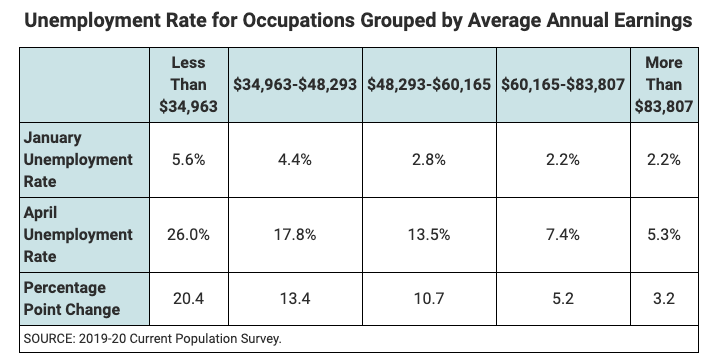As might be expected, customer service representatives, a category of workers that include collection agents, were among the hardest hit during the early days of the pandemic, according to research that was published by the Federal Reserve Bank of St. Louis. The research looked at the annual earnings of those who had jobs that were most affected by the COVID-19 pandemic.
To keep things even, the researchers created five equal-sized groups, based on annual income. Those groups were:
- Those earning less than $34,963, which includes occupations such as cooks, servers, janitors and cashiers
- Those earning $34,963 to $48,293, which includes medical assistants, clerks, construction workers and customer service representatives
- Those earning $48,293 to $60,165, which includes elementary school teachers, retail salespersons, and maintenance and repair workers
- Those earning $60,165 to $83,807, which includes registered nurses, industrial mechanics, accountants and computer support specialists
- Those earning more than $83,807, which includes physicians and dentists, lawyers, financial managers and sales representatives
Those who made less money were far more likely to lose their jobs because of the pandemic.

Those individuals in the top two income brackets accounted for 17% of the total increase in unemployment, while those in the bottom brackets accounted for 34% on their own.
“In conclusion, workers in occupations with lower average earnings were disproportionally displaced by the COVID-19 crisis, while workers in occupations with higher average earnings — especially those in the top 20% — were impacted to a lesser extent: From January to April, the unemployment rate increased to 5.34% for individuals in occupations at the highest average earnings level; it increased fivefold — to 26% — for those in the lowest average earnings level,” the researchers wrote.








